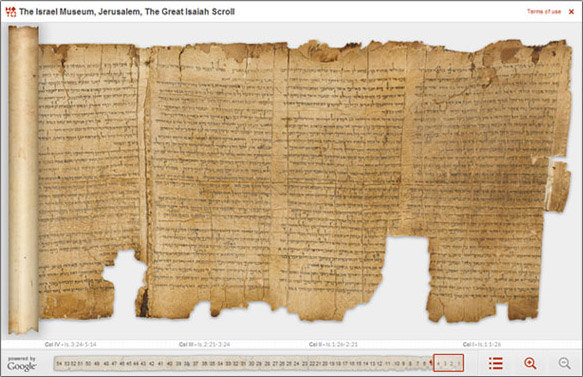SugarOcean
¡pɹᴉǝM ʎɐʇS

- Masoretic Version of the Hebrew Bible
The evidence emerging from the Qumran scrolls is that there were several concurrent versions of the biblical text, though one - now referred to as the proto-Rabbinic or proto-Masoretic - enjoyed a special status by the Greco-Roman period (3rd century BCE - 1st century CE). That apparently became the authoritative text for mainstream Judaism toward the end of the Second Temple, as evidenced by ancient parchment fragments of several biblical books (1st-2nd century CE) discovered in other parts of the Judean Desert (Masada, Wadi Murabba'at, Nahal Hever, and Nahal Tze'elim).
Through the activity of generations of sages (known as "Masoretes"), who faithfully preserved and transmitted the sacred words across centuries, an authoritative or Masoretic version of the Hebrew Bible gradually evolved, containing its definitive correct text, proper vocalization, and accentuation marks. The Aleppo Codex, transcribed by the scribe Solomon son of Buya'a and annotated by the scholar Aaron ben Asher in the 10th century CE in the Galilean city of Tiberias, is considered the finest extant example of this version.
Since then, the Masoretic version has become the standard authoritative text of the Hebrew Bible, from which modern translations were and still are being made. While there are numerous English online translations of this traditional text, the version you see here is the authoritative version of the biblical Book of Isaiah, as rendered by the Jewish Publication Society in 1917 and published by the American Israeli Cooperative Enterprise.
- Great Isaiah Scroll Version
The text of the Great Isaiah Scroll generally conforms to the Masoretic or traditional version codified in medieval codices (all 66 chapters of the Hebrew version, in the same conventional order). At the same time, however, the two thousand year old scroll contains alternative spellings, scribal errors, corrections, and most fundamentally, many variant readings. Strictly speaking, the number of textual variants is well over 2,600, ranging from a single letter, sometimes one or more words, to complete variant verse or verses.
For example, the second half of Verse 9 and all of Verse 10 in the present Masoretic version of Chapter 2 are absent from the Great Isaiah Scroll in the Israel Museum's full manuscript that you see here online. The same verses, however, have been included in other versions of the Book of Isaiah in the scrolls found near the Dead Sea (4QIsaa, 4QIsab), and the Hebrew text from which the ancient Greek version or Septuagint (3rd-1st century BCE) was translated. This confirms that these verses, although early enough, were a late addition to the ancient and more original version reflected in the Great Isaiah Scroll.
- Recommendations:
Keeping these basic concepts in mind, we recommend that you use the tools at your disposal in the following ways:
- If you are a Hebrew reader, choose any passage of the Great Isaiah Scroll, and compare it to the Masoretic version of the same passage in the Aleppo Codex (The Aleppo Codex Online homepage). You may then assess the agreements and disagreements between both versions.
- If you do not read Hebrew, please take the following suggested steps:
- Choose a specific passage from the Great Isaiah Scroll version, and click on the online JPS English translation of the Book of Isaiah in the online viewer. Note that this translation reflects only the Masoretic version of the biblical book, and does not specifically reflect the present text of the Great Isaiah Scroll version.
- If you wish to compare both versions, please click here, and you will see the first five chapters of the Book of Isaiah in parallel columns: On the left, the English translation of the Great Isaiah Scroll by Professor Peter Flint (Trinity Western University, Canada) and Professor Eugene Ulrich (University of Notre Dame), and on the right, the JPS English translation of the Masoretic version. Thus you will be able to evaluate on your own the intricate issue of variant readings, which have obvious literary, historical and theological implications for the correct understanding of Isaiah's original words.
http://dss.collections.imj.org.il/isaiah
Amazon has this available in hardcover. Has anyone studied this? What are your thoughts?
